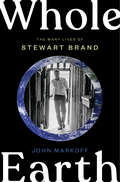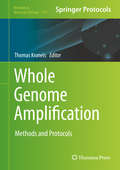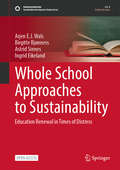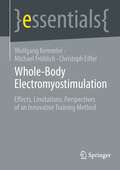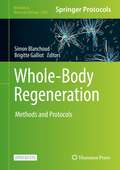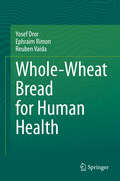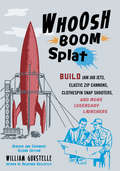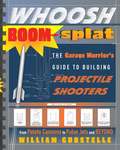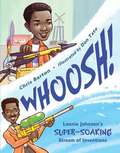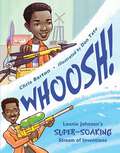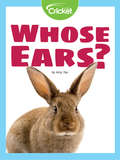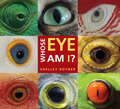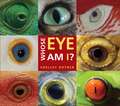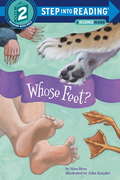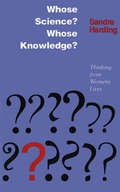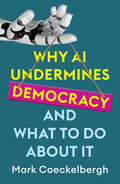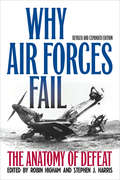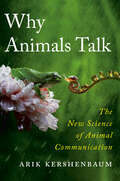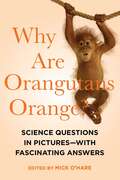- Table View
- List View
Whole Earth: The Many Lives of Stewart Brand
by John MarkoffTold by one of our greatest chroniclers of technology and society, the definitive biography of iconic serial visionary Stewart Brand, from the Merry Pranksters and the generation-defining Whole Earth Catalog to the marriage of environmental consciousness and hacker capitalism and the rise of a new planetary culture—the story behind so many other storiesStewart Brand has long been famous if you know who he is, but for many people outside the counterculture, early computing, or the environmental movement, he is perhaps best known for his famous mantra &“Stay Hungry. Stay Foolish.&” Steve Jobs&’s endorsement of these words as his code to live by is fitting; Brand has played many roles, but one of the most important is as a model for how to live. The contradictions are striking: A blond-haired WASP with a modest family inheritance, Brand went to Exeter and Stanford and was an army veteran, but in California in the 1960s he became an artist and a photographer in the thick of the LSD revolution. While tripping on acid on the roof of his building, he envisioned how valuable it would be for humans to see a photograph of the planet they shared from space, an image that in the end landed on the cover of his Whole Earth Catalog, the defining publication of the counterculture. He married a Native American woman and was committed to protecting indigenous culture, which connected to a broader environmentalist mission that has been a through line of his life. At the same time, he has outraged purists because of his pragmatic embrace of useful technologies, including nuclear power, in the fight against climate change. The famous tagline promise of his catalog was &“Access to Tools&”; with rare exceptions he rejected politics for a focus on direct power. It was no wonder, then, that he was early to the promise of the computer revolution and helped define it for the wider world. Brand's life can be hard to fit onto one screen. John Markoff, also a great chronicler of tech culture, has done something extraordinary in unfolding the rich, twisting story of Brand&’s life against its proper landscape. As Markoff makes marvelously clear, the streams of individualism, respect for science, environmentalism, and Eastern and indigenous thought that flow through Brand&’s entire life form a powerful gestalt, a California state of mind that has a hegemonic power to this day. His way of thinking embraces a true planetary consciousness that may be the best hope we humans collectively have.
Whole Genome Amplification
by Thomas KroneisThis volume mirrors the holistic feature of whole genome amplification (WGA) technology by combining reviews, detailed basic methods and advanced sample workflows. The first part of the book covers an overview of the development of WGA techniques throughout recent years including general considerations on bias in WGA, possible sample pre-enrichment strategies and how to run a single-cell lab. The second part focuses on major WGA methods and protocols that allow the assessment of WGA product quality. The final chapters contain advanced protocols and address issues such as sample preparation using laser-micro dissection; WGA from partially degraded DNA (formalin-fixed paraffin embedded samples); circulating tumor cells; and ancient samples. Written in the highly successful Methods in Molecular Biology series format, chapters include introductions to their respective topics, lists of the necessary materials and reagents, step-by-step, readily reproducible laboratory protocols and tips on troubleshooting and avoiding known pitfalls. Authoritative and thorough, Whole Genome Amplification: Methods and Protocols will serve as a rich source of detailed information and inspiration and will help researchers, both new and experienced, yield successful results.
Whole School Approaches to Sustainability: Education Renewal in Times of Distress (Sustainable Development Goals Series)
by Arjen E. J. Wals Birgitte Bjønness Astrid Sinnes Ingrid EikelandIn response to urgent global sustainability challenges, Education for Sustainable Development (ESD) and Global Citizenship Education have been prioritized in the United Nations’ Agenda 2030 under SDG 4.7. There is a growing awareness that treating concepts such as global citizenship, sustainable development, climate urgency, and health and well-being as separate subjects or topics to be added to a curriculum is ineffective as they are highly interconnected. Additionally, this approach is problematic as schools already have an overcrowded curriculum. This edited volume brings together a range of scholars and reflective practitioners from across the globe who are investigating and enacting a whole school approach (WSA) in education for sustainability. While the WSA and related approaches, such as those advocated by EcoSchools, are becoming more popular, there is a lack of understanding of their underlying principles and the different manifestations in diverging socio-cultural contexts at different educational levels. This collection of chapters provides a deeper understanding of the WSA, while also addressing its effectiveness, possibilities for upscaling, professional development needs for WSA practitioners, interlinkages with more conventional curriculum requirements, expectations of students and parents, and more. This is an open access book.
Whole-Body Electromyostimulation: Effects, Limitations, Perspectives of an Innovative Training Method (essentials)
by Michael Fröhlich Wolfgang Kemmler Christoph EiflerThis essential is intended as a compact reference for issues and aspects related to the innovative training technology of whole-body electromyostimulation (WB-EMS). In addition to background and information on WB-EMS application, in which the authors pay particular attention to safe and effective use, there is a current overview of research results summarizing the effects of WB-EMS on various target outcomes. Finally, a characterization of the market situation, current trends and a forecast of developments in the field of WB-EMS is presented.
Whole-Body Regeneration: Methods and Protocols (Methods in Molecular Biology #2450)
by Simon Blanchoud Brigitte GalliotThis Open Access volume provides a comprehensive overview of the latest tools available to scientists to study the many facets of whole-body regeneration (WBR). The chapters in this book are organized into six parts. Part One provides a historical overview on the study of the WBR phenomena focusing on the primary challenges of this research. Parts Two and Three explore a series of non-vertebrate zoological contexts that provide experimental models for WBR, showing how they can be approached with cellular tools. Parts Four, Five, and Six discuss the future advancements of WBR, reporting about the cutting-edge techniques in genetics and omics used to dissect the underlying mechanisms of WBR, and systems biology approaches to reach a synthetic view of WBR. Written in the highly successful Methods in Molecular Biology series format, chapters include introductions to their respective topics, lists of the necessary materials and reagents, step-by-step, readily reproducible laboratory protocols, and tips on troubleshooting and avoiding known pitfalls. Authoritative and thorough, Whole-Body Regeneration: Methods and Protocols is a valuable resource for scientists and researchers who want to learn more about this important and developing field.
Whole-Wheat Bread for Human Health
by Yosef Dror Ephraim Rimon Reuben VaidaThis book examines the effect of whole-wheat bread on health, with evidence linking the consumption of whole-wheat products to a decrease in the relative risk of non-communicable diseases in comparison with products baked from refined flour. The authors focus on key areas such as milling and refining procedures, bakery products, and assessment of the present consumption of wheat products. They offer a detailed description of all available ingredients of wheat-kernel, with particular attention paid to the health benefits of wheat-kernel antioxidants and dietary fiber ingredients. Vitamins, glutathione, choline and betaine, carotenoids, sterols and stanols are covered, and the book concludes with a general overview of the effect of whole-wheat bread on colon activity and immune capacity. Methods of improving bread nutritional quality, and the potential for the upgrading of the nutritional qualities of whole-bread, are also discussed. Consumption of whole-wheat in Western societies, however, has either not increased or increased very slightly. The authors intend for this book to highlight the health benefits of whole-wheat bread and the factors that contribute to these benefits.
Whoosh Boom Splat: Build Jam Jar Jets, Elastic Zip Cannons, Clothespin Snap Shooters, and More Legendary Launchers
by William GurstelleIn this revised and expanded edition, William Gurstelle shows ordinary folks how to build a dozen fun and impressively powerful launchers with inexpensive household and hardware store materials. This new edition includes three new projects along with diagrams, photographs, and fascinating science information. With a strong emphasis on safety, the book also gives tips on troubleshooting and describes each machine's historical origins as well as the science behind it. Workshop warriors and tinkerers at any skill level will love these new exciting DIY projects.
Whoosh Boom Splat: The Garage Warrior's Guide to Building Projectile Shooters
by William GurstelleThese are the homemade machines that you’ve dreamed of building, from the high-voltage Night Lighter 36 spud gun to the Jam Jar Jet, the Marshmallow Shooter, and the Yagua Blowgun. Including detailed diagrams and supply lists, Gurstelle’s simple, step-by-step instructions help workshop warriors at any skill level achieve impressively powerful results. WithWhoosh Boom Splat, you can build: - The Jam Jar Jet—the simple pulse jet engine that roars - The Elastic Zip Cannon—a membrane-powered shooter that packs a wallop - The Mechanical Toe—a bungee-powered kicking machine - The Vortex Launcher—a projectile shooter that uses air bullets for ammunition - The Clothespin Snap Shooter—the PG-17 version of a clothespin gun that fires fiery projectiles - The Architronito—the steam-powered cannon conceived by Leonardo da Vinci And many more! In addition to learning how to make these cool gadgets, you’ll find sections packed with information on what makes each machine unique. Gurstelle describes the machine’s historical origins as only he can: with verve, fun, and the sort of quirky details his legions of fans love. Whoosh Boom Splatis a must-have for every extreme tinkerer.
Whoosh!
by Chris Barton Don TateYou know the Super Soaker. It’s one of top twenty toys of all time. And it was invented entirely by accident. Trying to create a new cooling system for refrigerators and air conditioners, impressive inventor Lonnie Johnson instead created the mechanics for the iconic toy. A love for rockets, robots, inventions, and a mind for creativity began early in Lonnie Johnson’s life. Growing up in a house full of brothers and sisters, persistence and a passion for problem solving became the cornerstone for a career as an engineer and his work with NASA. But it is his invention of the Super Soaker water gun that has made his most memorable splash with kids and adults.
Whoosh!: Lonnie Johnson's Super-Soaking Stream Of Inventions (Into Reading, Read Aloud Module 5 #3)
by Chris Barton Don TateNIMAC-sourced textbook <p><p> You know the Super Soaker. It’s one of top twenty toys of all time. And it was invented entirely by accident. Trying to create a new cooling system for refrigerators and air conditioners, impressive inventor Lonnie Johnson instead created the mechanics for the iconic toy. <p> A love for rockets, robots, inventions, and a mind for creativity began early in Lonnie Johnson’s life. Growing up in a house full of brothers and sisters, persistence and a passion for problem solving became the cornerstone for a career as an engineer and his work with NASA. But it is his invention of the Super Soaker water gun that has made his most memorable splash with kids and adults.
Whoosh!: Lonnie Johnson's Super-Soaking Stream of Inventions
by Chris BartonA cool idea with a big splash You know the Super Soaker. It&’s one of top twenty toys of all time. And it was invented entirely by accident. Trying to create a new cooling system for rockets, impressive inventor Lonnie Johnson instead created the mechanics for the iconic toy. A love for rockets, robots, inventions, and a mind for creativity began early in Lonnie Johnson&’s life. Growing up in a house full of brothers and sisters, persistence and a passion for problem solving became the cornerstone for a career as an engineer and his work with NASA. But it is his invention of the Super Soaker water gun that has made his most memorable splash with kids and adults.
Whoosh!: Lonnie Johnson's Super-soaking Stream Of Inventions
by Chris Barton Don TateA cool idea with a big splash. You know the Super Soaker. It's one of top twenty toys of all time. And it was invented entirely by accident. Trying to create a new cooling system for refrigerators and air conditioners, impressive inventor Lonnie Johnson instead created the mechanics for the iconic toy. A love for rockets, robots, inventions, and a mind for creativity began early in Lonnie Johnson's life. Growing up in a house full of brothers and sisters, persistence and a passion for problem solving became the cornerstone for a career as an engineer and his work with NASA. But it is his invention of the Super Soaker water gun that has made his most memorable splash with kids and adults.
Whose Ears?
by Amy TaoAnimals have different-looking ears, yet, help them to hear! Some animals have large floppy ears like the bunny, who points each ear in different directions–hearing two sounds at once! The harbor seal that has no ears, yet hears through holes that close when it dives! Whether floppy or unnoticed–these animals have ears perfect for hearing!
Whose Egg Is That? (Whose Is THAT?)
by Darrin LundeA nonfiction guessing game that explores the connections between an animal, its eggs, and its habitat.Written by a mammalogist at the Smithsonian, this clever preschool page-turner pairs seven eggs with information about the animals' survival mechanisms, asking kids to guess which animal laid which egg. Whose Egg Is That? reveals the animals--ranging from penguins to platypuses--in their own habitats.
Whose Eye Am I?
by Shelley Rotner"Who am I?" ask captions alongside close-ups of colorful animal eyes. As readers guess which animal belongs to each eye, they will discover that each animal has a unique and amazing way of seeing. Snakes have clear eyelids that cannot ever open or close. Some sea creatures have hundreds of eyes around the edges of their shells. Many animals can see colors that are invisible to humans. Brimming with vivid and engaging photographs, this book also includes a clear explanation of how human eyes work, a labeled diagram of a human eye, a glossary, and an index.
Whose Eye Am I? (Into Reading, Read Aloud Module 3 #3)
by Shelley RotnerNIMAC-sourced textbook <P><P>"Who am I?" ask captions alongside close-ups of colorful animal eyes. As readers guess which animal belongs to each eye, they will discover that each animal has a unique and amazing way of seeing. Snakes have clear eyelids that cannot ever open or close. Some sea creatures have hundreds of eyes around the edges of their shells. Many animals can see colors that are invisible to humans. Brimming with vivid and engaging photographs, this book also includes a clear explanation of how human eyes work, a labeled diagram of a human eye, a glossary, and an index. <P><P>Lexile Measure: AD770L
Whose Feet? (Step into Reading)
by John Kanzler Nina HessMole claws scrape out a new home. A duck uses her webbed feet to flip underwater and search for a snack. Orangutan feet grab on tight as they swing from vine to vine. Who knew that feet could be so special and perform such extraordinary feats!
Whose Footprint Is That? (Whose Is THAT?)
by Darrin LundeA nonfiction guessing game that explores the connections between an animal, its tracks, and its habitat.Written by a mammalogist at the Smithsonian, this clever preschool page-turner pairs seven tracks with information about the animals' locomotion, asking kids to guess which animal left which tracks behind. Whose Footprint Is That? reveals the animals--ranging from flamingos to kangaroos--in their own habitats.
Whose Pharaohs? Archaeology, Museums and Egyptian Identity from Napolean to World War I
by Donald M. ReidA comprehensive history of Egyptian archeology, from the origins of the field during the Napoleonic era to World War I.
Whose Poop Is That? (Whose Is THAT?)
by Darrin LundePoop! Ewwww!No, don&’t say &“Ewwww.&” Ask, &“Whose poop is that?&” This simple, and yes, charming book asks this question about seven examples of animal poop. By investigating visual clues, young readers can learn to identify the animal through its droppings. For instance, find a sample of poop with bits of bone and tufts of hair. Turn the page to learn it came from a fox! Kelsey Oseid&’s illustrations are both accurate and beautiful. Backmatter includes further information about the poop and what scientists can learn from an animal&’s droppings."A primer on poop and a guessing game, especially for those just beyond toilet training" — Kirkus Reviews"Gross-out details will provoke glee...but kids will learn plenty about the variety and importance of animal waste, too" —Publisher's Weekly"As accessible to newly independent readers as it is to younger listeners" — Bulletin of the Center for Children's Books"Sure to appeal to curious youngsters. Recommended for collections that can't get enough titles on poop" — School Library Journal"The kid-friendly illustrations and matter-of-fact tone make this title an informative, rather than a gross-out, pick, though is certainly what will get kids reaching for the shelves" — Booklist"Friendly and inviting to novice naturalists" — Horn Book"What are you waiting for? Come get the &“scoop on poop&”!" — NSTA Recommends
Whose Science? Whose Knowledge?: Thinking from Women's Lives
by Sandra HardingSandra Harding here develops further the themes first addressed in her widely influential book, The Science Question in Feminism, and conducts a compelling analysis of feminist theories on the philosophical problem of how we know what we know. Following a strong narrative line, Harding sets out her arguments in highly readable prose. In Part 1, she discusses issues that will interest anyone concerned with the social bases of scientific knowledge. In Part 2, she modifies some of her views and then pursues the many issues raised by the feminist position which holds that women's social experience provides a unique vantage point for discovering masculine bias and and questioning conventional claims about nature and social life. In Part 3, Harding looks at the insights that people of color, male feminists, lesbians, and others can bring to these controversies, and concludes by outlining a feminist approach to science in which these insights are central. "Women and men cannot understand or explain the world we live in or the real choices we have," she writes, "as long as the sciences describe and explain the world primarily from the perspectives of the lives of the dominant groups." Harding's is a richly informed, radical voice that boldly confronts issues of crucial importance to the future of many academic disciplines. Her book will amply reward readers looking to achieve a more fruitful understanding of the relations between feminism, science, and social life.
Why AI Undermines Democracy and What To Do About It
by Mark CoeckelberghAcross the world, AI is used as a tool for political manipulation and totalitarian repression. Stories about AI are often stories of polarization, discrimination, surveillance, and oppression. Is democracy in danger? And can we do anything about it? In this compelling and balanced book, Mark Coeckelbergh reveals the key risks posed by AI for democracy. He argues that AI, as currently used and developed, undermines fundamental principles on which liberal democracies are founded, such as freedom and equality. How can we make democracy more resilient in the face of AI? And, more positively, what can AI do for democracy? Coeckelbergh advocates not only for more democratic technologies, but also for new political institutions and a renewal of education to ensure that AI promotes, rather than hinders, the common good for the twenty-first century. Why AI Undermines Democracy and What to Do About It is illuminating reading for anyone who is concerned about the fate of democracy.
Why Air Forces Fail: The Anatomy of Defeat
by Robin Higham and Stephen J. HarrisIncludes two new chapters! &“One of the more interesting and better books on military aviation to appear in the last few years.&”—Journal of Military History Since the publication of the first edition of Why Air Forces Fail, the debate over airpower&’s role in military operations has only intensified. Here, eminent historians Robin Higham and Stephen J. Harris assemble a team of experts to add essential new details to their cautionary tale for current practitioners of aerial warfare. Together, the contributors examine the complex, often deep-seated, reasons for the catastrophic failures of the Russian, Polish, French, British, Italian, German, Argentine, and American air services. Complemented by reading lists and suggestions for further research, this seminal study with two new chapters provides an essential and detailed analysis of defeat. &“Contains many interesting insights and interpretations . . . an excellent introduction to the study of military failure in general and air forces in particular.&”—Journal of America&’s Military Past &“I recommend this book to those who are interested in air forces and air power, whether amateur or professional, past, present and future.&”—Richard Cobbold, Bryanston: The Yearbook &“Provides an excellent analysis of the root causes of failure; this engaging study goes far beyond the aerial battlefield to examine the circumstances leading to defeat.&”—Dennis Drew, Colonel, USAF (Ret.)
Why Animals Talk: The New Science of Animal Communication
by Arik Kershenbaum"Animal communication doesn&’t need to resemble human language to be full of meaning and nuance. Arik Kershenbaum delivers an expert overview of the astonishing discoveries made in the last few decades" —Frans de WaalFrom leading zoologist Arik Kershenbaum, a delightful and groundbreaking exploration of animal communication and its true meaningAnimal communication has forever seemed intelligible. We are surrounded by animals and the cacophony of sounds that they make—from the chirping of songbirds to the growls of lions on the savanna—but we have yet to fully understand why animals communicate the way they do. What are they saying? This is only part of the mystery. To go deeper, we must also ask, what is motivating them?Why Animals Talk is an exhilarating journey through the untamed world of animal communication. Following his international bestseller, The Zoologist&’s Guide to the Galaxy, acclaimed zoologist Arik Kershenbaum draws on extensive original research to reveal how many of the animal kingdom&’s most seemingly confusing or untranslatable signals are in fact logical and consistent—and not that different from our own. His fascinating deep dive into this timeless subject overturns decades of conventional wisdom, inviting readers to experience for the first time communication through the minds of animals themselves.From the majestic howls of wolves and the enchanting chatter of parrots to the melodic clicks of dolphins and the spirited grunts of chimpanzees, these often strange expressions are far from mere noise. In fact, they hold secrets that we are just beginning to decipher. It&’s one of the oldest mysteries that has haunted Homo sapiens for hundreds of thousands of years: Are animals talking just like us, or are we the only animals on the planet to have our own language?
Why Are Orangutans Orange?
by Mick O’HareFun science and nature trivia with full-color photos in a &“deeply fascinating and occasionally rib-tickling book&” (Booklist).From the editor at New Scientist who brought us such works as How to Fossilize Your Hamster, this is an illustrated compendium of facts that reveal the beauty, complexity, and mystery of the world around us. Drawing on the magazine&’s popular &“Last Word&” column, Why Are Orangutans Orange? covers everything from bubbles to bugs, as well as why tigers have stripes and blue-footed boobies have, well, blue feet. With over two million copies sold, this series of question-and-answer compendiums is a delight for anyone who loves to learn!
